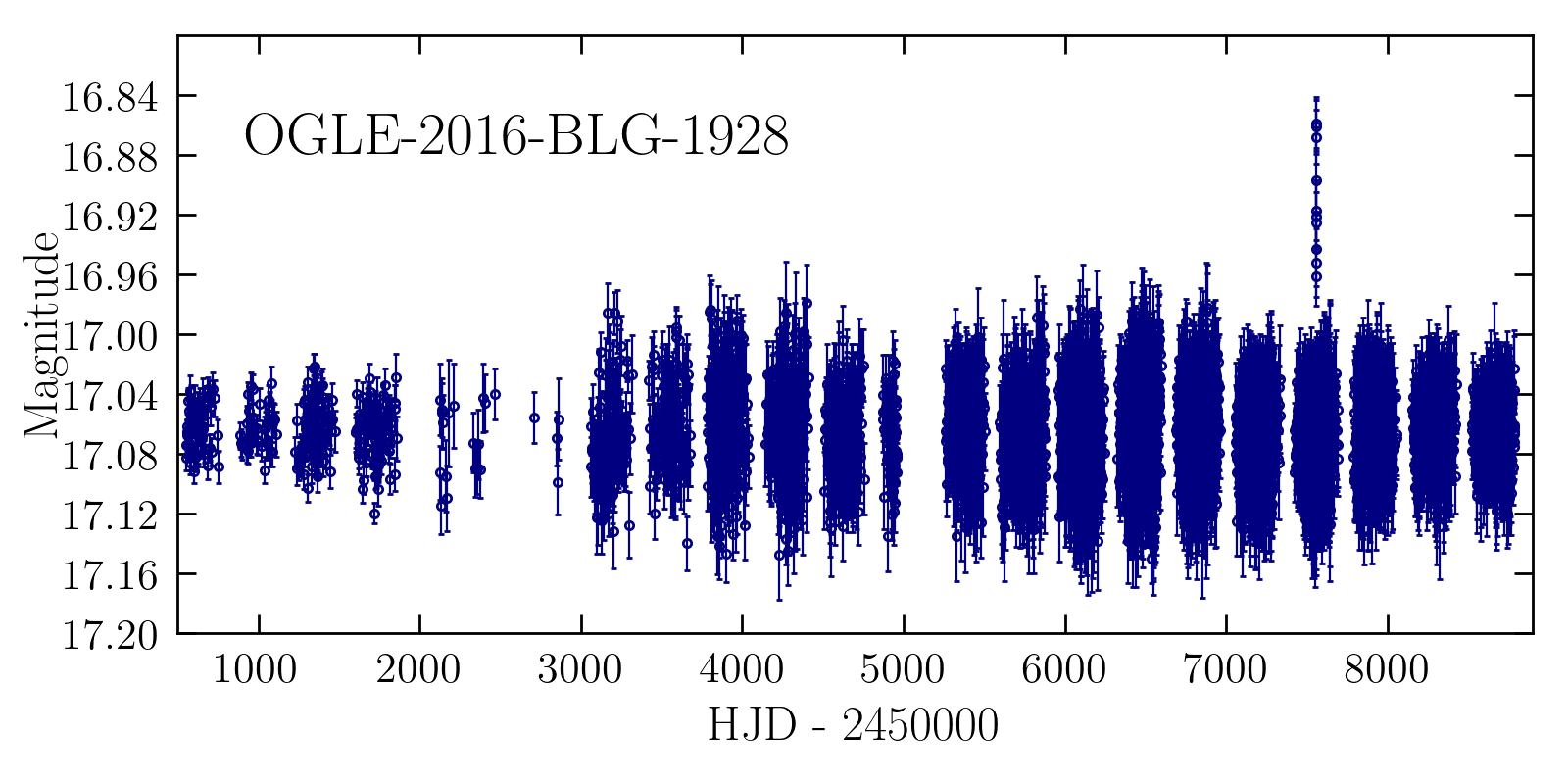A terrestrial-mass rogue plant candidate detected in the shortest-timescale microlensing event
Some low-mass planets are expected to be ejected from their parent planetary systems during early stages of planetary system formation. According to planet-formation theories, such as the core accretion theory, typical masses of ejected planets should be between 0.3 M⊕ and 1.0 M⊕. Although in practice such objects do not emit any light, they may be detected using gravitational microlensing via their light-bending gravity. Microlensing events due to terrestrial-mass rogue planets are expected to have extremely small angular Einstein radii (< 1 μas) and extremely short timescales (< 0.1 day).
Here, we present the discovery of the shortest-timescale microlensing event, OGLE-2016-BLG-1928, identified to date (tE ≈ 0.0288 day = 41.5 min). Thanks to the detection of finite-source effects in the light curve of the event, we were able to measure the angular Einstein radius of the lens θE = 0.842 ± 0.064 μas, making the event the most extreme short-timescale microlens discovered to date. Depending on its unknown distance, the lens may be a Mars- to Earth-mass object, with the former possibility favored by the Gaia proper motion measurement of the source. We rule out stellar companions up to the projected distance of 8.0 au from the planet. Our discovery demonstrates that terrestrial-mass free-floating planets can be detected and characterized using microlensing.


Light curve of the ultrashort microlensing event OGLE-2016-BLG-1928,
which was likely caused by a free-floating planet
Please cite the following paper when using the data or referring to these OGLE results: Mroz et al. 2020, Astrophysical Journal Letters, 903, 11, (arXiv:2003.01126).
 back
back